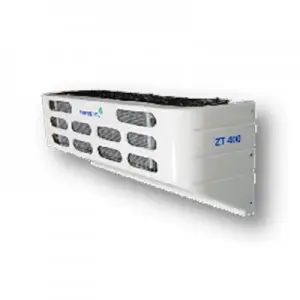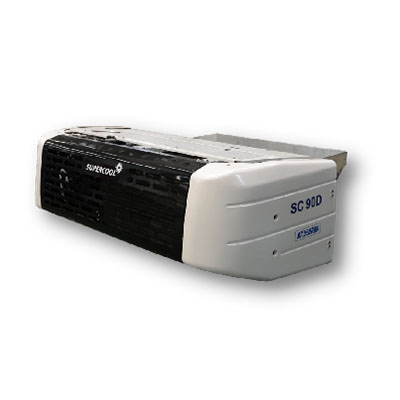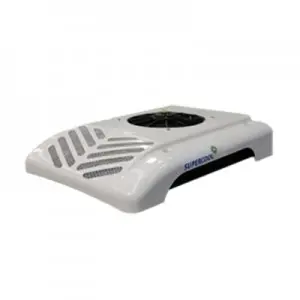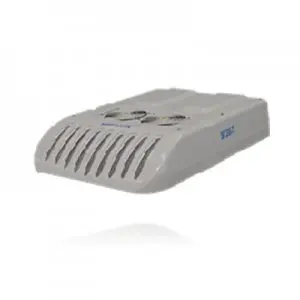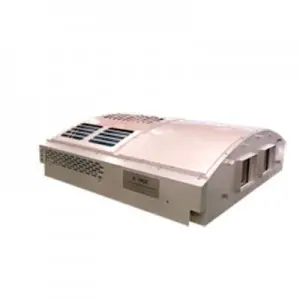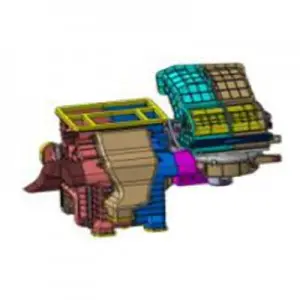Front Mounted Direct Drive Truck Refrigeration Unit
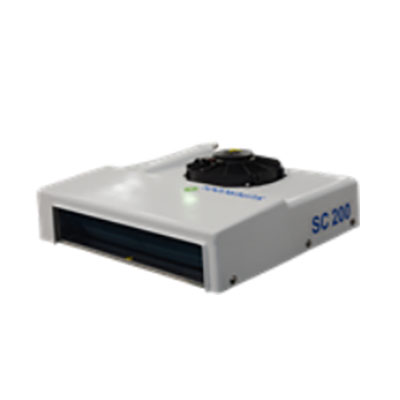
SC200
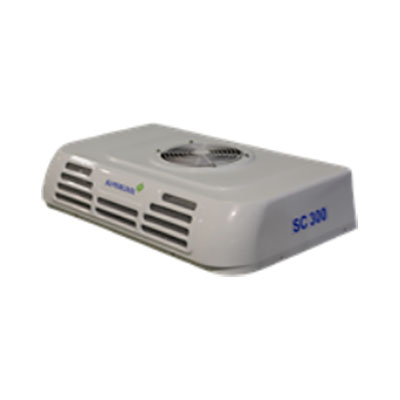
SC200/SC300
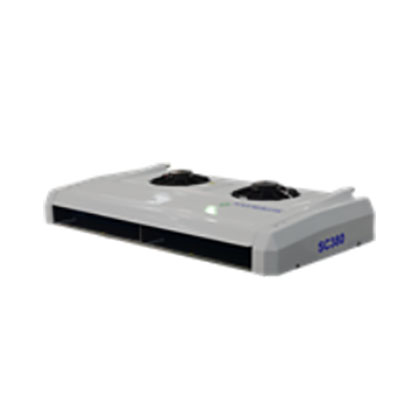
SC300/SC350/SC380
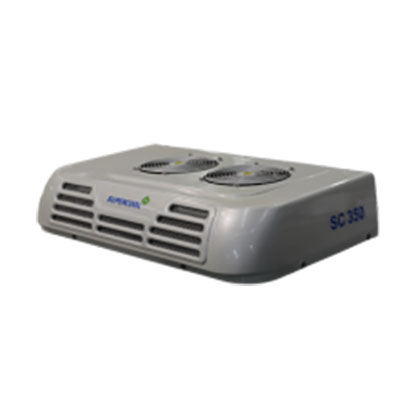
SC350
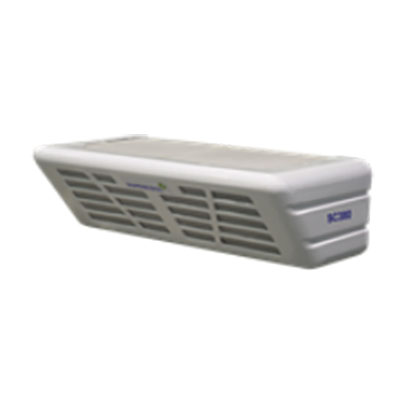
SC380
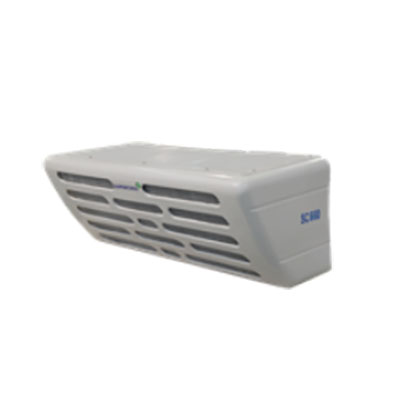
SC550/SC660/SC760/SC960
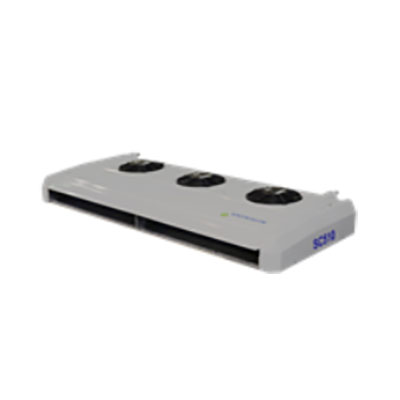
SC660/SC550
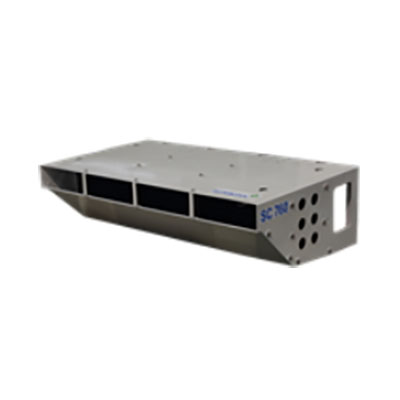
SC760/SC960
Box Truck Refrigeration Unit
A Box truck refrigeration unit, also known as a transport refrigeration unit (TRU) or refrigeration unit, is a cooling or refrigeration unit mounted on a truck or trailer, usually driven by a separate diesel engine or an electric motor, which drives a compressor to circulate refrigerant and produce cooling.
The main function of a Box truck refrigeration unit is to provide a low-temperature refrigerated environment for perishable goods or items that need to be kept in a low-temperature environment during transportation, and it is commonly used for the transportation of temperature-sensitive products such as foodstuffs and pharmaceuticals in order to maintain their freshness and quality.
SC series is a kind of front mounted direct drive truck refrigeration unit for 2m to 9.6m long truck that used for short or middle distance transport.
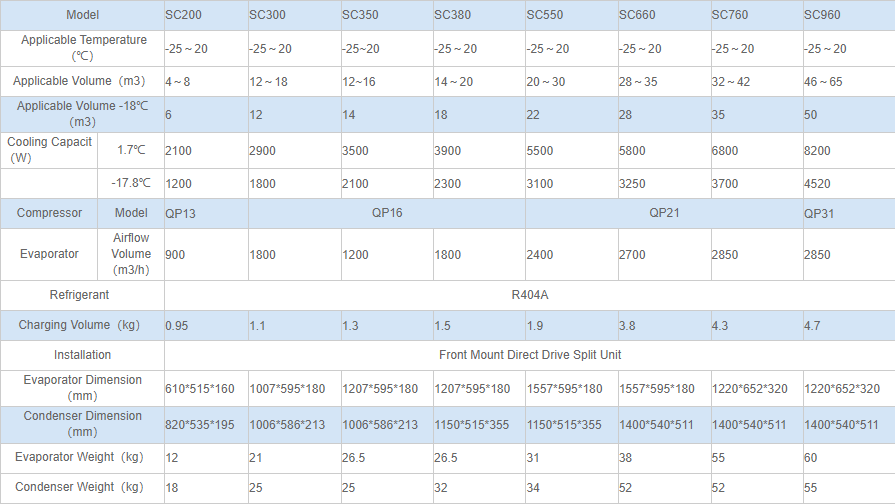
1. Cooling capacity marked with Chinese national standard GB/T21145-2007 ambient temperature 37.8℃.
2. The application of truck body volume is for reference only. The actual application volume relates to truck body thermal insulation properties, temperature and the loaded cargo.
3. Wide range of operating temperature: -30℃~+50℃ ambient temperature.
4. The hot-gas defrost system with defrost temperature controller, which is safe, fast and reliable to keep the quality of the cargo.
5. Electric standby unit is available and optional.
1. High-precision temperature control: The application of electronic expansion valve and PID algorithm meets the high-precision temperature control requirements of medicine and high-end cold chain transportation.

2. Micro-channel technology: suitable for micro-channel heat exchangers of refrigeration units, with lighter weight, higher efficiency and lower cost.
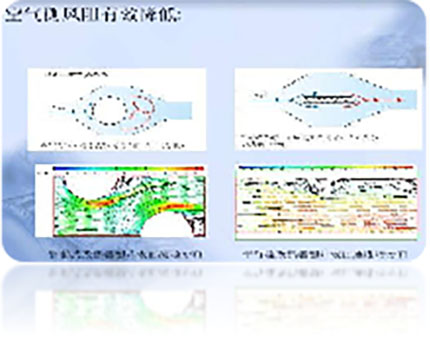
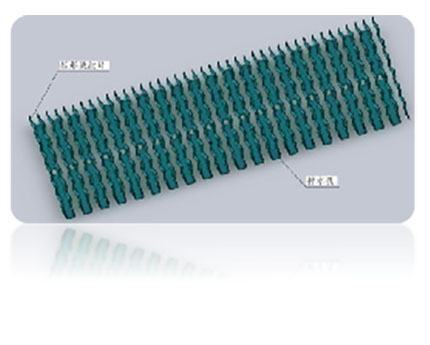
| Comparison of tube fin heat exchanger and parallel flow heat exchanger | ||
| Parameter comparison | Tube fin heat exchanger | Parallel flow heat exchanger |
| Heat exchanger weight | 100% | 60% |
| Heat exchanger volume | 100% | 60% |
| Heat transfer efficiency | 100% | 130% |
| Heat exchanger cost | 100% | 60% |
| Refrigerant charging volume | 100% | 55% |
3. Remote monitoring technology: The customer terminal, refrigerated truck manufacture, and refrigerating units manufacturer form an organic whole through the Internet, improve the quality and service level of the unit, and create greater value for customers.
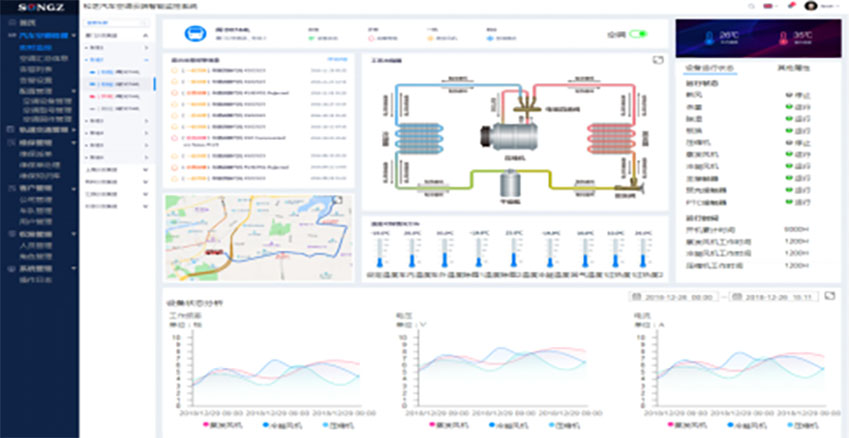

4. Brushless fan: The service life of the brush fan is increased from several thousand hours to more than 40,000 hours, the fan efficiency is increased by more than 20%, and the energy saving and economic efficiency are significantly improved. Application of continuous adjustment control, with pressure sensor and temperature sensor to achieve system optimization.

5. High-efficiency heating technology: the application of composite hot gas bypass heating and integrated cooling and heating heat exchanger, automatically select the heating mode according to the outside weather, and easily cope with various low-temperature weather, while taking into account the purpose of energy saving and consumption reduction
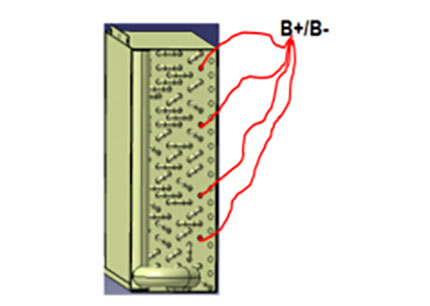
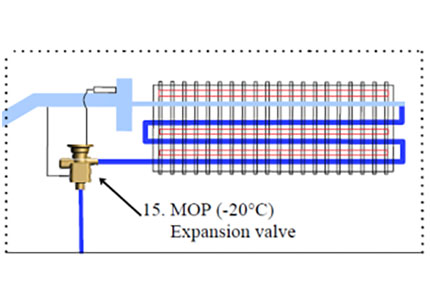
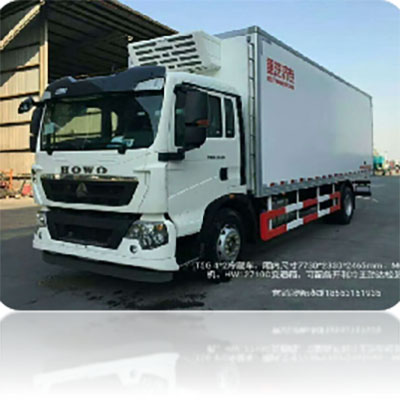
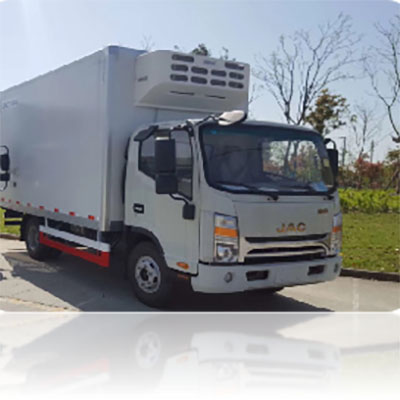
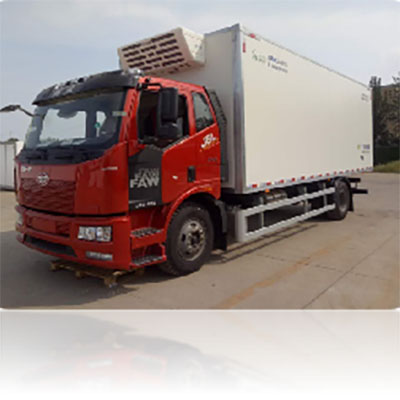
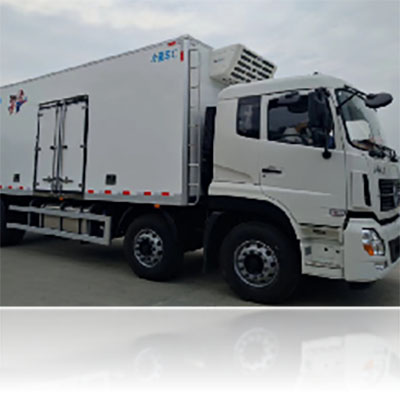
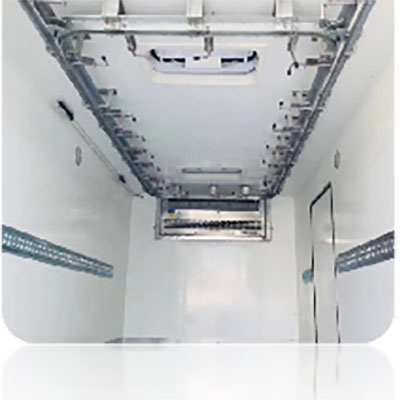
The Box truck refrigeration unit utilizes the principle of refrigeration to remove heat from the cargo area and maintain the desired temperature.
Compression: The process starts with the compressor, which is driven by a separate engine or motor. The compressor draws in a low-pressure refrigerant gas and compresses it, thereby increasing its temperature and pressure.
Condensation: The high pressure, high temperature refrigerant gas then flows into a condenser, which is usually located on the outside of the truck or trailer. In the condenser, the refrigerant releases heat to the surroundings, usually through air or water cooling. As a result, the refrigerant undergoes a phase change and condenses into a high-pressure liquid.
Expansion: The high-pressure liquid refrigerant flows out of the condenser through an expansion valve or throttle tube. These devices act as throttling devices to reduce the pressure and temperature of the refrigerant.
Evaporation: At this point the low-pressure, low-temperature refrigerant enters the evaporator, which is usually located in the cargo hold. When the air in the cargo hold passes through the evaporator coil, the refrigerant absorbs heat from the air and evaporates. The evaporation process cools the air circulating in the cargo hold.
Circulation: A fan or blower circulates the evaporator-cooled air back into the cargo area to maintain the desired temperature. The fan also helps distribute the cooled air evenly throughout the cargo area.
REFRIGERANT CIRCULATION: The refrigerant absorbs heat in the evaporator and returns to the compressor in a gaseous state to start the cycle all over again. It is then compressed again to begin a new cycle of heat absorption, condensation, expansion and evaporation.
Control and Monitoring: Truck refrigeration units are equipped with a control system that allows the operator to set and monitor the desired temperature in the cargo area. The control system regulates the operation of the compressor, fans and other components to maintain the set temperature.
By continuously circulating refrigerant from the compressor, condenser, expansion valve and evaporator, the truck refrigeration unit effectively removes heat from the cargo area, ensuring that perishable cargo is preserved during transportation.

R&D strength
About
Join us


Copyright ©2023 SONGZ, All Right Reserved.

































































































